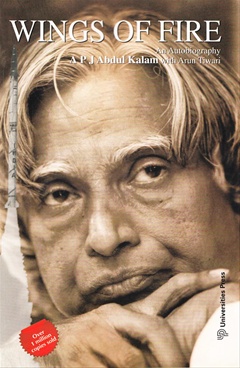Great Indian Novel Torrent
Over a century ago, Rudyard Kipling wrote his infamous “White-Man’s Burden” poem, directing it towards the Indian populace subject to colonial rule. While his poem is today derided for its virulently racist tone, it said a lot about the troubled state of a culture under siege: Take up the White man’s burden — Send forth the best ye breed — Go bind your sons to exile To serve your captives’ need; To wait in heavy harness On fluttered folk and wild — Your new-caught, sullen peoples, Half devil and half child. Since India’s climactic independence in 1947, however, their literature—in particular their novel—has succeeded in reinvigorating the medium on a national and international scale. Authors like Salman Rushdie and V.S.

The Great Indian Novel by Shashi Tharoor. Sign up to save your library. With an OverDrive account, you can save your favorite libraries for at-a-glance. Last year I tried to download the ‘ The Great Indian Novel’ by Shashi Tharoor. It was (is) not available online for Free download and i searched multiple sites. 24 comments on “ 60 Best Websites To Download Free ePub and. Free copy of Great Expectations. They have everything from cook books by Paula Dean to.
Naipaul have reinvented the genre to best portray the storied but tumultuous nation. In the words of, the novel was seen as the form most capable of consolidating anticolonial sentiment, of resisting orthodoxy, and of promoting social change. Here is an essential list of some of the finest works from modern-day India: An experimental and at times absurd account of an Indian woman coming to terms with her responsibilities and her marriage duties, the novel weaves back and forth between Calcutta and New York.
The narrator, who refers to herself in the second person, is but one of the many elusive but nevertheless remarkable characters in the novel, which has been compared to Virginia Woolf’s great modernist classic Mrs.Dalloway. A Fine Balance tells the story of two Bombay tailors who struggle to stay afloat during the tumultuous infighting of the 1970’s. Mistry, an Indian-Canadian author who has become a reknowned figure in both countries, explores the vicissitudes of history upon communities and the stability of family in the face of great uncertainty Daughter of fellow Indian Author Anita Desai, Kiran’s sophomore effort about a retired Himalayan judge’s family trying to hold his family together during the Nepalese uprising won her the Booker Prize in 2006. The Inheritance of Loss is both local and international, and like many other Indian Novels, explores the consequences of colonialism and present-day globalisation upon a once-isolated pastoral life. This collection of short stories from this Pulitzer-Prize winning Indian-American author speaks volumes about the dissonance of the immigrant experience. The title story, among others, is built around our desire for health and happiness in a world both multicultural and connected, but unfortunately still stricken by Babel’s curse.

Now a required reading for anybody learning World literature, Salman Rushdie wrote one of the greatest works of Indian Literature when he was just 34. One of the foundational texts of Magic Realism, Rushdie describes India from the moment of Independence onward through the eyes of a child born in a world full of mystical forces. Darkly ironic but grand in scope, this novel is an essential introduction to the wild but contemplative nature of the Indian novel. Just as Joseph Conrad shocked (and offended) the world with his classic novella Heart of Darkness, Naipaul’s novel about post-colonial Africa delved deeply into the issues that wracked newly-independent countries after the eventual exit of Europeans. Though controversial, A Bend in the River paints a troubling portrait of corrupt governance amid the vast Indian Diaspora in eastern and southern Africa. This novel combines all of the best elements of Indian Literature I have previously described: Magic Realism, the striking extent of globalization, and of course a uniquely wrought poetic voice enliving both India and Los Angeles. This novel is a celebration of multiplicity, pushing forward with a barrage of images, vignettes and anecdotes that almost jump out of the page.
This intergenerational novel about a Burmese boy falling in love with an Indian girl spans over half a century, beginning with the British Invasion of Burma in 1885 all the way to Indian independence in 1947. Extensively-researched and teeming with detail, The Glass Palace portrays both the decline of royalty and the rise of Industrial trade in a surprisingly personal manner. The story of two telepathic twins from Kerala reunited after over 20 years of separation, Roy’s experimental style irked as many critics as she impressed, but the novel has been, like other contemporary Indian novels, hailed for its innovative and playful language. Regardless of the disparity, though, The God of Small Things is not merely a display of bells and whistles; rather, it is an intensely psychological examination of post-colonial, rural India. The great Russian Novel of India, Vikram Seth tells delves into the complexities of what should be a simple marriage plot, and explores the relational dynamics between Indian people in an era where nothing yet seems solved. It is, however, a relatively hopeful tale that delicately combines satire with equivocal vindication of gender and caste. The story of a conman turned guru is the most famous novel of who some critics refer to as the Indian William Faulkner, who is equally remembered for the creation of a -style town called Malgudi.
On top of being a classic story of redemption, The Guide’s two points of view shed light on both the Indian as individual and the Indian community as a whole, and Narayan’s expansive scope was repeatedly championed by British author Graham Greene. Join the conversation and let us know what you think of the list. The problem with the list is that it ignores the vast literature penned down in Indian languages. Writings in English are not very representative of a large part of the population which does not live in big cities and is poor. A more realistic and comprehensive depiction of Indian life is found in the works Indian authors like Rabindranath Tagore, Premchand, Sharatchandra Chatterjee, Mahashweta Devi, Shivaji Sawant and so many others, most of whom because of never having had their work translated in English are virtually unknown outside India (even in India too). I also believe that the Indian culture and way of life is best described in Indian languages; with translation some of the flavour is lost. There are super books.
United Nations
Mistry, Ghose and Vikram Seth are some of my favourites. However, English is just one of many Indian languages.
In our Lit club, which consists of people from almost all parts of India, we had made a list of books in regional literature that are must-reads.
Top Pages
- Pengertian Saham Pdf
- Boddie Recording Company Cleveland Ohio Rar
- Cyber Crime Security Software
- Storagecard Navione Navione.exe
- Futura Pt Font Family
- Ra One Psp Iso Game
- Universe Sandbox 2 For
- Scorpions Blackout 1982 Rar
- Tales Of The Abyss Iso Jpn Torrent
- Gentoo Livecd Amd64 2008.0-r1
- Pcs Nepal Font
- Candy Wrapper Template Hershey Nuggets Milk
- Imax B6 Charger Pc Software
- Logic Pro 9.1 Serial Torrent
- Photo Filter Effects
- Remo Repair Word 2 0 Keygen Torrent





